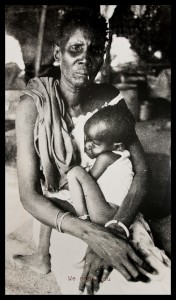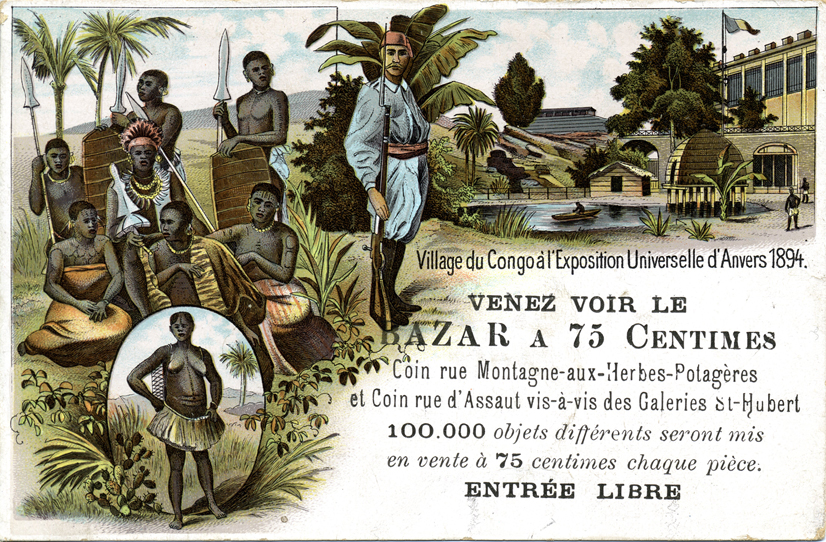No one can escape dealing with, if not the East/West division, then the North/South one, the have/have-not one, the imperialist/anti-imperialist one, the white/colored one. We cannot get around them all by pretending that they do not exist.1
–Edward Said
Key national ‘actors’ are cast in conventionally masculine, typically ‘alpha-male’, roles: as a soldier, leader or representative of state, as an official artist or faithful citizen-hero—in most cases as a fraternal or otherwise fatherly figure…By contrast, the woman as an equal participant in the action of the drama is noticeably absent…External to the ‘serious’ affairs of the national community, she assumes an emblematic status as a symbol of maternal self-sacrifice or of the nation’s fierce, ‘virginal’ pride—if, that is, she is not excluded from the action entirely as an unknown subversive quantity and a threat.2
—Elleke Boehmer
Edward Said’s 1979 text, Orientalism, induced what many critical theorists have deemed a “paradigm shift” in how we consider cross-cultural discourse in the postcolonial era.3 Said’s work applied a “critical consciousness” to the examination of the social hierarchies and power relations that govern the conceptions of other peoples as distinctly other within an increasingly interconnected, globalized society. His work proved that this dichotomizing force is inherent within modern cross-cultural discourse at the same time that he directed our attention to the subtle–and not-so-subtle–conceptual mechanisms with which we divert attention away from this societal fact. The term ‘other’ becomes a verb in Said’s lexicon, as he describes this practice as a “systematic discipline by which European culture was able to manage—and even produce—the Orient politically, sociologically, militarily, ideologically, scientifically, and imaginatively during the post Enlightenment period.”4
As one of the groundbreaking texts of its kind, Said’s work is often granted a deserved authority when referenced by other postcolonial theorists. Notably within feminist discourse, however, Said’s ideas have faced criticism. Elleke Boehmer presents a compelling argument in which she cites the overlapping elements of these arresting conceptions, in arguing that discourse yielding the objectification of femininity is neither historically nor mechanistically separate from the cross-cultural othering that Said discusses.5 While Boehmer admits that Said briefly acknowledges the reflexivity between feminism and anti-colonial discourse in his later works, and that he also observes that “women’s resistances to ‘unfair male practices’ are ‘organically related’ to nationalist agitation in the Third World,” she refers to his inclusion of gender theory as a “structural add-on.”6 Boehmer argues that Said’s academic background was largely masculine and that his sensitivity and entitlement to feminist narratives was consequently minimal. In an earlier work of hers cited above, Boehmer includes the discourse that Said incited, but she points to his omissions as she demonstrates how gender narratives have been perpetuated in postcolonial discourse, and could perhaps be deemed as a causal framework, particularly for the ordering of postcolonial power relations.
Gender narratives inform not only how we examine the evolution of postcolonial power dynamics, but also how we understand hegemonic discourse. The beginnings of these hierarchized narratives are not static notions, as the context of their discussion necessarily determines the content, and therefore origins, of their discourse.7 Thus the debate goes on over whether these social conditions are an inherent element of human nature, or merely the products of an arbitrary, yet very real, social development. Postcolonial theory questions precisely this notion of “objectivity” and recognizes that all knowledge is situated. To the extent that these mechanisms of othering can be intellectualized, the unconscious representational power of objectified bodies and fetishized cultures remains undeniable.
In 1989 the Conceptual artist Adrian Piper made a work called Ur-Mutter #2, now in the collection of the Mount Holyoke College Art Museum. Based on the manipulation of a photojournalistic photograph of a Somalian woman–which she  requested permission from the photographer, Peter Turnley, to use–the silkscreened photograph raises many pertinent issues here. When we Westerners saw Turnley’s image initially published in the morning paper or a popular news magazine, the narrative of starvation, poverty, and societal impotence pervaded our considerations of the mother and child, whether we went on to read the accompanying editorial that possibly illuminated their true identities, or not. When Adrian Piper extracted the image from the news arena and tethered it to her creative output, complete with the caption “We made you”, the narrative of the fiercely sacrificial mother remained intact. The piece is implicating and conceptually confounding: none of which would have been communicable in three words and an image without the employment of the othering narrative used to represent feminine, and non-Western people employed by Turnley.
requested permission from the photographer, Peter Turnley, to use–the silkscreened photograph raises many pertinent issues here. When we Westerners saw Turnley’s image initially published in the morning paper or a popular news magazine, the narrative of starvation, poverty, and societal impotence pervaded our considerations of the mother and child, whether we went on to read the accompanying editorial that possibly illuminated their true identities, or not. When Adrian Piper extracted the image from the news arena and tethered it to her creative output, complete with the caption “We made you”, the narrative of the fiercely sacrificial mother remained intact. The piece is implicating and conceptually confounding: none of which would have been communicable in three words and an image without the employment of the othering narrative used to represent feminine, and non-Western people employed by Turnley.
This construction of ‘otherness’ is particularly palpable in the voyeuristic gaze enacted in anthropozoological exhibitions at the turn to the 20st century and their blending of discourses in anthropology, entertainment, and the arts. This Belgian postcard advertising the exhibition of Congolese natives in a ‘human zoo’ at the 1894 World’s Fair in Antwerp, demonstrates, albeit  narrowly, that othering is profitable, not only socially and financially, but also in terms of forging identity on a broad cultural scale. While this ultimate profitability might not be financially realized as swiftly as Turnley’s when people sympathized with his image and bought the paper or when Antwerpers were beckoned out by the postcard, the perpetuation of such imagery cannot be liberated of responsibility for the broader cultural conditions and the social power dynamics that have remained stable since.
narrowly, that othering is profitable, not only socially and financially, but also in terms of forging identity on a broad cultural scale. While this ultimate profitability might not be financially realized as swiftly as Turnley’s when people sympathized with his image and bought the paper or when Antwerpers were beckoned out by the postcard, the perpetuation of such imagery cannot be liberated of responsibility for the broader cultural conditions and the social power dynamics that have remained stable since.
By stabilizing the identity of (an)other, one is able to stabilize and control the identity of oneself; by supplementing an artwork with imagery associated with this romanticized other, the artist forges an identity of his control between the viewer and himself. The artists’ superimposition of an identity derived from the subject for the sake of identification with the viewer is not a victimless act. As Jacques Derrida elucidates, there is a tripartite discourse that takes place between purveyor, recipient, and compositionsa–artist, viewer, and subject–and this inherently diverts attention away from the content: not to the end of erasing its very meaning, but by supplementing the material with specific elements that stimulate the viewer’s preconceived notions about the content:
[It] intervenes or insinuates itself in-the-place-of…If it represents and makes an image it is by the anterior default of a presence…the supplement is an adjunct, a subaltern instance…As substitute, it is not simply added to the positivity of a presence, it produces no relief…Somewhere, something can be filled up to itself…only by allowing itself to be filled through sign and (performative) proxy.8
In perpetuating the colonial gaze through the supplementation of exotic or otherwise traditionally fetishized imagery, artists and other individuals concerned with media of representation are able to objectify non-Western identities in a manner that can be profitable to their particular ends. Artists like Adrian Piper, among many others featured in our gallery, who are interested in subverting the employment of this political mechanism, engage in direct acts of Derridean supplementation of their own. Whether it be through juxtaposition of quintessential postcolonial imagery alongside critical counterpoints or appropriated representation placed in provocative contexts, the artists who truly grant agency to their subjects are those that convey the colonial gaze explicitly as content. The result is an implicated audience, a humanized subject and a provocatively distanced artist; their instructions are indeterminate because the content is never static.
–Noah Street Dickerman
1Edward W. Said, Orientalism (New York: Vintage, 1979), 327.
2Elleke Boehmer, Stories of Women: Gender and Narrative in the Postcolonial Nation (Manchester: Manchester UP, 2005), 28
3 Shehla Burney, Pedagogy of the Other: Edward Said, Postcolonial Theory, and Strategies for Critique (New York: Peter Lang, 2012), 23.
4 Edward W. Said, Orientalism (New York: Vintage, 1979), 3.
5Elleke Boehmer, “Edward Said and (the Postcolonial Occlusion Of) Gender,” in Edward Said and the Literary, Social, and Political World, ed. Ranjan Ghosh (New York: Routledge, 2009), 128.
6Ibid, 129.
7R. Radhakrishnan, A Said Dictionary. (Chichester, West Sussex: Wiley-Blackwell, 2012) 9-11.
8Jacques Derrida, Of Grammatology (Baltimore: John Hopkins University Press, 1974), 145.